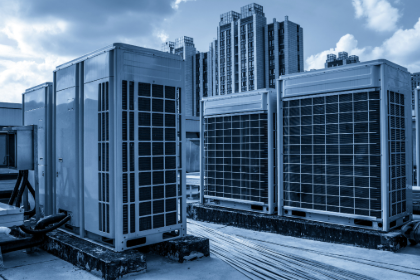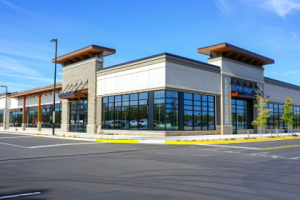Unveiling the Economic Influence on Commercial Real Estate: A Comprehensive Analysis by Commercial Properties Marketplace
Introduction: Understanding the Economic Impact on Commercial Real Estate
Commercial real estate is a vital component of any economy, serving as a barometer for economic growth and development. The economic climate plays a significant role in shaping the performance and value of commercial properties. Understanding the economic impact on commercial real estate is crucial for investors, developers, and policymakers alike.
Factors Affecting Commercial Real Estate in the Current Economic Climate
Several factors influence the commercial real estate market in the current economic climate. One of the primary drivers is interest rates. When interest rates are low, borrowing costs decrease, making it more affordable for businesses to invest in commercial properties. Conversely, high-interest rates can deter investment and slow down the market.
Another critical factor is employment rates. A strong job market leads to increased demand for office spaces, retail outlets, and industrial facilities. Conversely, high unemployment rates can lead to a decrease in demand and a decline in property values.
Additionally, consumer spending patterns have a significant impact on commercial real estate. When consumers have more disposable income, they are more likely to spend on retail and entertainment, driving demand for commercial spaces. Conversely, during economic downturns, consumers tend to tighten their belts, leading to decreased demand for commercial properties.
Analyzing the Relationship between Economic Indicators and Commercial Property Performance
To understand the relationship between economic indicators and commercial property performance, it is essential to analyze key metrics. One such metric is Gross Domestic Product (GDP), which measures the overall economic output of a country. A strong GDP growth rate often correlates with increased demand for commercial properties.
Another crucial indicator is vacancy rates. When the economy is thriving, businesses expand, leading to lower vacancy rates. Conversely, during economic downturns, businesses may downsize or close, resulting in higher vacancy rates. Monitoring vacancy rates can provide insights into the health of the commercial real estate market.
Rental rates are also indicative of economic trends. During periods of economic growth, rental rates tend to increase as demand outpaces supply. Conversely, during economic downturns, rental rates may decline as businesses struggle to maintain profitability.
Future Outlook: Predicting Economic Trends and their Implications for Commercial Real Estate
Predicting economic trends and their implications for commercial real estate is a complex task. However, several indicators can provide insights into future market conditions. One such indicator is the yield curve, which measures the difference between short-term and long-term interest rates. An inverted yield curve, where short-term rates are higher than long-term rates, often precedes an economic downturn. Investors and developers should closely monitor the yield curve to anticipate potential shifts in the commercial real estate market.
Another crucial factor to consider is demographic trends. The aging population and changing consumer preferences can significantly impact the demand for commercial properties. For example, the rise of e-commerce has led to increased demand for warehouse and distribution centers, while the decline of traditional brick-and-mortar retail has affected the demand for retail spaces.
Furthermore, geopolitical factors can influence the commercial real estate market. Trade policies, political stability, and global economic conditions can all impact investor sentiment and cross-border investment. Staying informed about geopolitical developments is essential for understanding potential risks and opportunities in the commercial real estate sector.
In conclusion, the economic climate has a profound influence on commercial real estate. Factors such as interest rates, employment rates, and consumer spending patterns shape the performance and value of commercial properties. Analyzing economic indicators such as GDP, vacancy rates, and rental rates can provide insights into market conditions. Looking ahead, monitoring indicators such as the yield curve, demographic trends, and geopolitical factors can help predict future trends and their implications for commercial real estate. By understanding the economic impact on commercial real estate, stakeholders can make informed decisions and navigate the market effectively.





